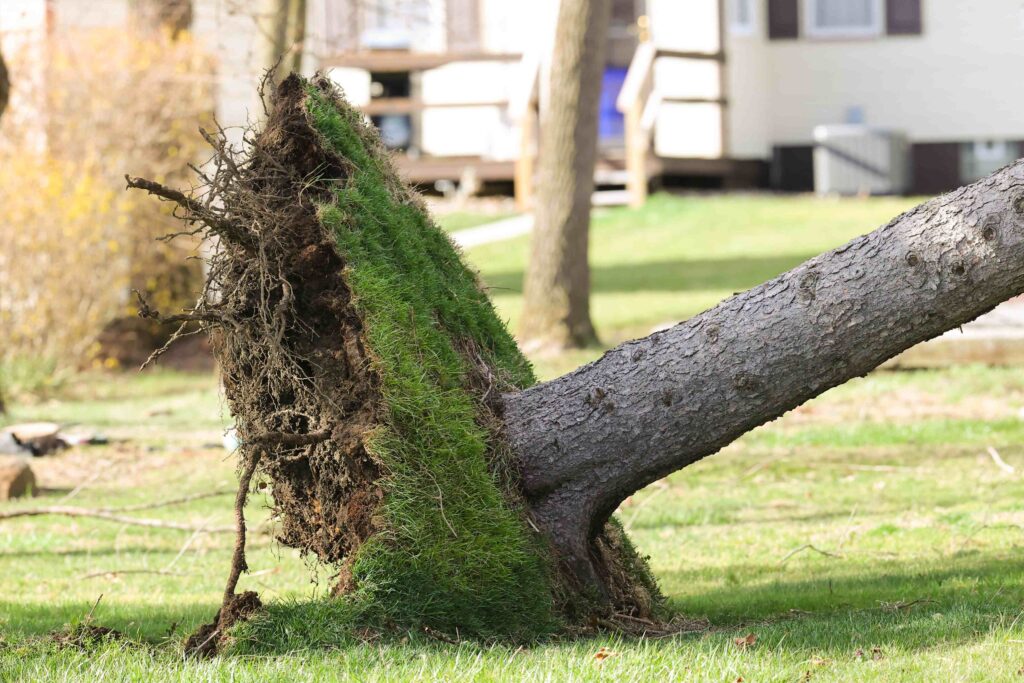
If Your Tree Falls On Your Neighbor’s Yard, Who Pays?
Every year, storms and natural disasters cause damage on homes and other property. Cleaning up that damage from a storm can be time-consuming and tedious, both emotionally and physically. What’s worse? When it’s your neighbor’s tree that fell on your house. Now what?
Many homeowners are shocked to learn that when a neighbor’s tree falls on their house, it is usually their own homeowner policy, not their neighbor’s, that has to cover the cost. Read below for general guidelines on various situations for “who pays.” Be sure to always check your policy for coverages and exclusions.
Your Property, Your Responsibility
Overall, if your property is damaged, you are responsible for fixing it, whether the damage came from a tree limb on your property, your neighbors, or from a yard 2 miles down the road.
A windstorm is not any one particular person’s fault; it is simply an act of nature. If a tree does damage your property, your policy will cover the damages. After all, that’s why you have homeowners insurance in the first place: to protect your home and property from unforeseen damage.
Their Property, Their Responsibility
Maybe you think it seems unfair that if your neighbor’s tree falls on your house, you have to pay. Well, the standard applies both ways. If your tree falls or causes damage to your neighbor’s home, it is their insurance policy that is responsible for covering the cost.
Negligence and Liability
So, what happens when it wasn’t a storm or natural disaster that caused the tree to fall?
If your neighbor’s tree was decaying from years of disease, and he/she has neglected to do anything about it, what then? Your insurance carrier will still be the one paying for the claim. However, if you can prove that your neighbor is at fault for the tree falling down, your insurance carrier will most likely attempt to collect the coverage from the neighbor’s policy. Then, you would be reimbursed for your deductible.
Again, these rules and policies apply vice-versa, too.
Other Structures
If the fallen tree lands on your fence instead of your house, are you still covered? Generally speaking, yes.
A dwelling is your home or attached structure, such as a garage. Other structures are detached garages, sheds, fences, or gazebos. These are also insured, but typically only for about 10% of the coverage of your dwelling.
Vehicles Insured From Storm Damage
If you find a tree has fallen on your car after a storm, your homeowner insurance policy does not apply. Instead, you will need to look at your auto policy. With comprehensive coverage on your car, your auto insurance carrier will pay for the damages after you pay your deductible. This same rule would apply for a guest’s car.
Removal and Cleanup
If you were lucky enough to survive the storm with no damage, there is a strong chance you still have some clean up and removal to deal with. If a tree fell and didn’t hit anything, are you covered for removal costs?
On average, the maximum coverage is around $500 to assist with the clean up process in the event of a covered loss.
Replacement
Replacing the trees themselves can be complicated. Trees that have fallen due to wind damage may or may not be covered, so you will want to check with your policy. Most offer limited coverage for trees that have fallen due to fire, lightning, explosion, theft, vandalism, or aircraft. This is a case-by-case basis and will vary by insurance policy.
Make Sure You Are Covered
Contact us today at Staples & Associated Insurance to ensure you have sufficient coverage for whatever might “blow” your way!
